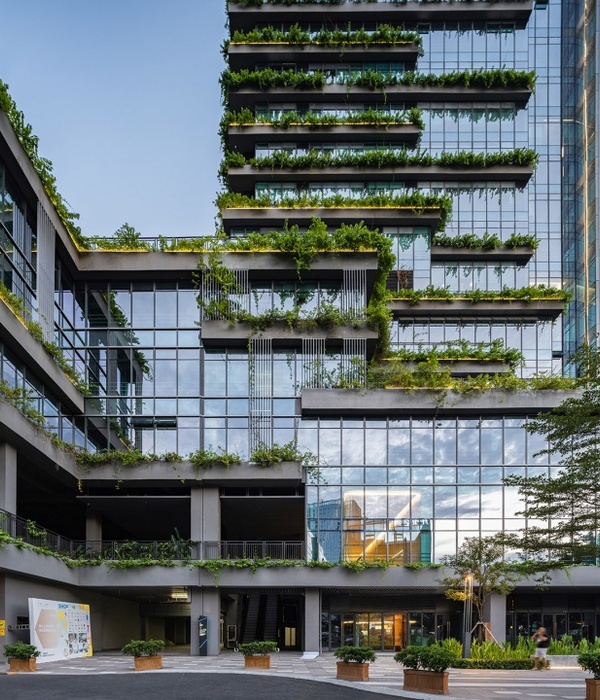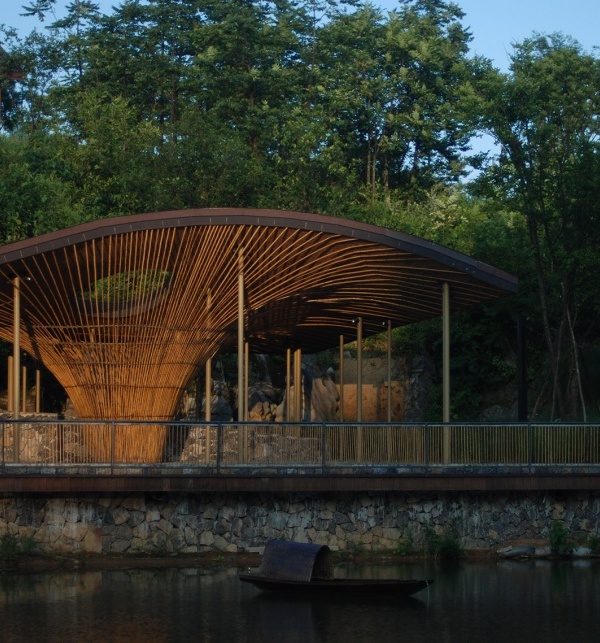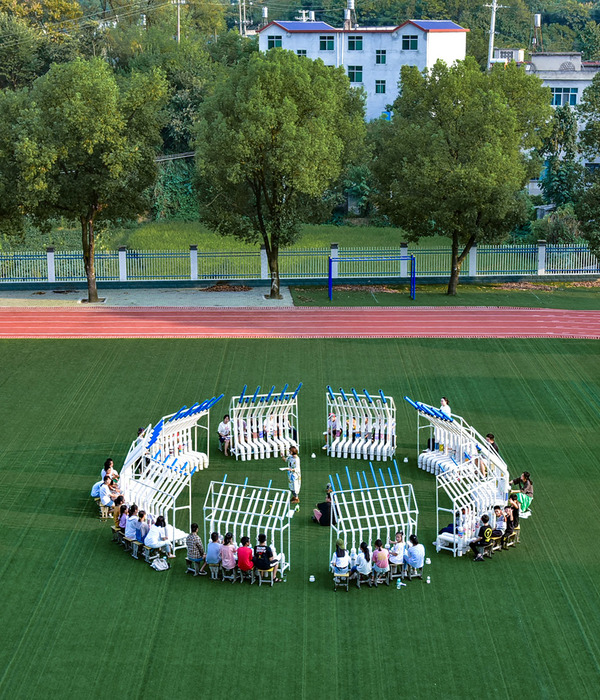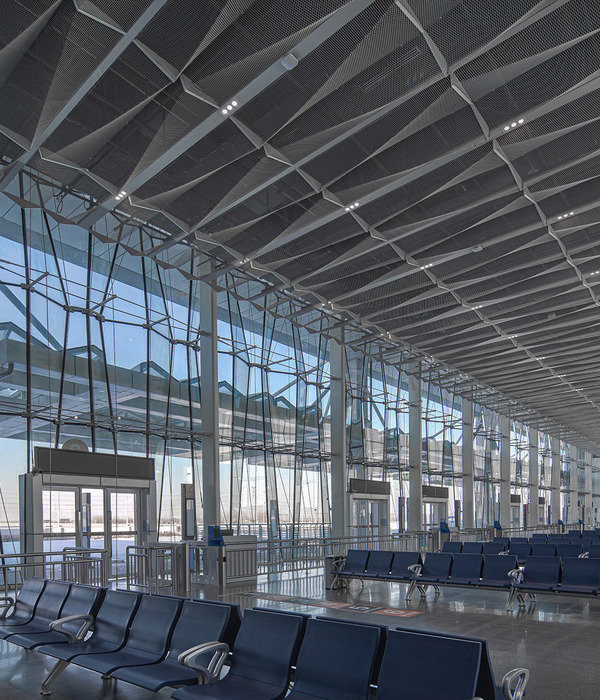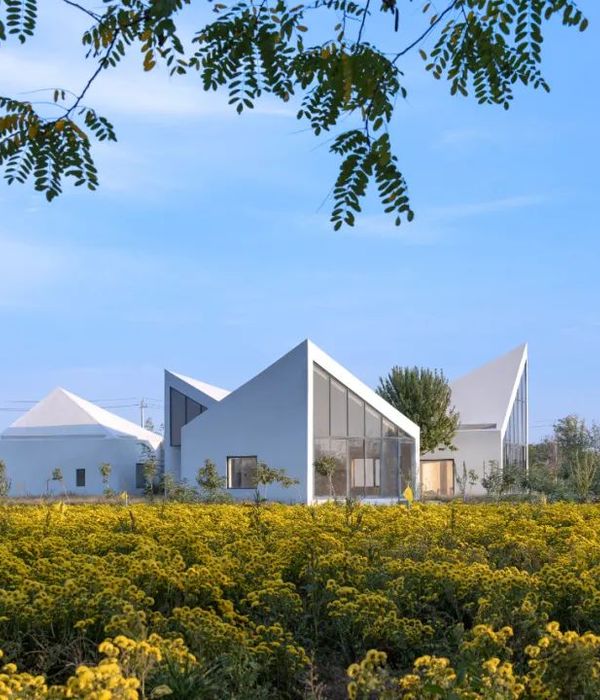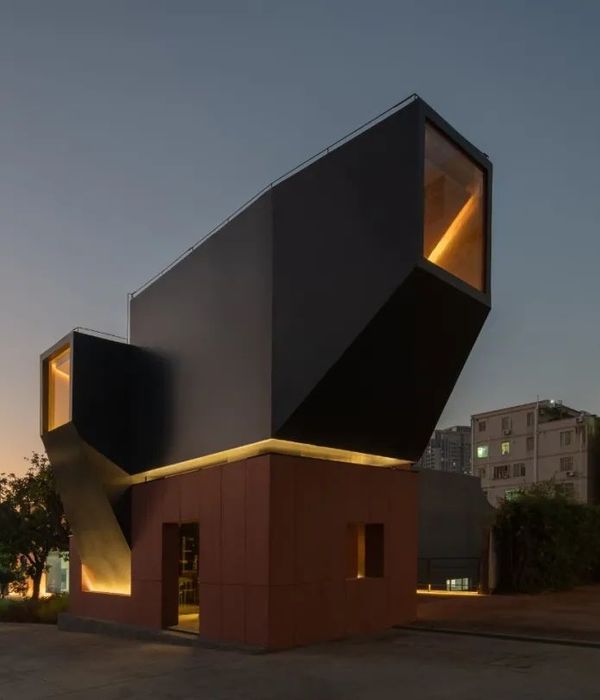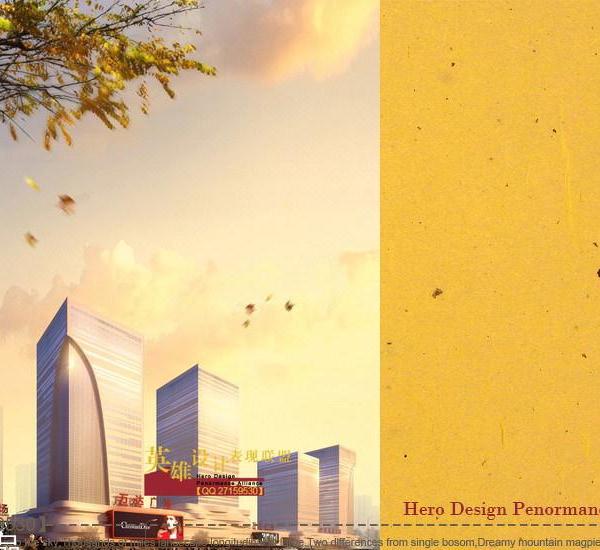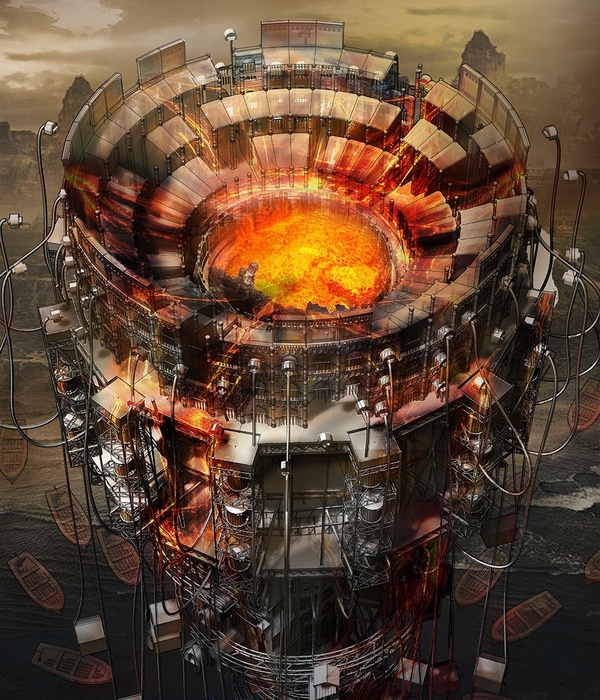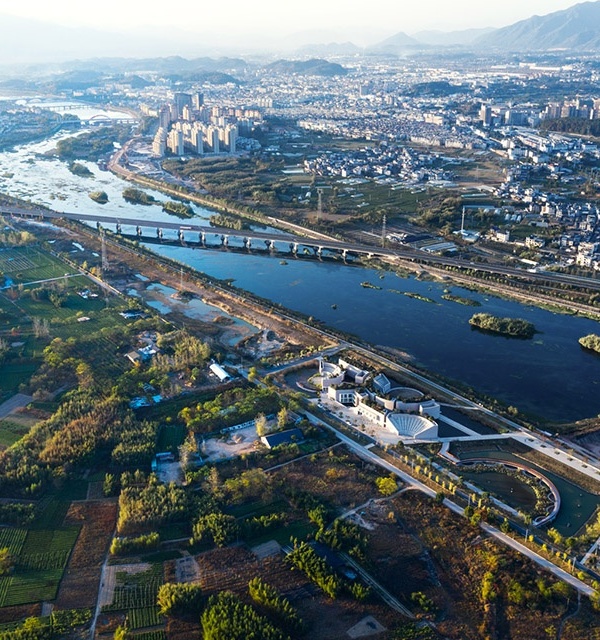WM大礼堂位于泗水市东部,旨在为学校每年的毕业典礼提供场地。除了需要容纳21500名学生,举办一年一度的纪念活动外,建筑师也在不断思考如何让这座礼堂更好地服务学生。项目以非公开形式进行招标,建筑师跳出了当地现有的建筑原型进行思考,在礼堂中植入一系列非正式的活动空间,设计出简单却十分独特的方案。
Located in the East Region of Surabaya, the WM Plenary Hall’s brief was simple : to create a building that caters for the annual graduation. Rather than simply designing a building that accommodates 21.500 students, we began asking ourselves, what other values can we add to make this building a student-centric building, rather than just being a monument used sparingly every year. As the project was procured through a closed competition, we look at ways to create an architecture that is different than the existing typology in the area. In the end, an idea of injecting various informal programs came into the design as a solution. The result is quite straightforward, yet unique.
▼礼堂外观,exterior of the WM Plenary Hall © Mario Wibowo
▼从西南侧进入礼堂,enter the hall from southwest © Mario Wibowo
▼礼堂东立面,east elevation of the WM Plenary Hall © Mario Wibowo
通高的大中庭位于首层,可通往二层的多功能厅。建筑师在夹层中设置了会议室、自习室等小功能房,加强了大空间和学生日常活动的联系,满足公共、私人以及特殊的空间需求。整个三层都是礼堂空间,包括了后台和自助餐厅。
A big atrium is placed on the ground level, which leads to a multifunction hall on the second floor. We put smaller function rooms (meeting and study) on the mezzanine floor to create a connection between the main void and student’s activity. It’s purposely designed to accommodate both communal, specific and private program. The auditorium fully occupies the entire 3rd floor alongside with backstage area and cafeteria.
▼入口大厅,通高的中庭宽敞明亮,lobby, bright big atrium © Mario Wibowo
▼自动扶梯通往多功能大空间,escalator leading to the multipurpose spaces © Mario Wibowo
▼多功能空间,一侧有夹层,multipurpose room, mezzanine on one side © Mario Wibowo
▼位于四层的祈祷室,pray room on the fourth floor © Mario Wibowo
当礼堂容量扩大到2000人以上时,新的问题就产生了。要满足上层需求,公共区域的占地面积或者立面外墙的预算便不得不减少。于是,建筑师们设计出 “高效建筑”作为解决方案,既为学生活动提供充足的空间,又有效控制了立面预算。方案保持高层的大空间,缩减低层的空间以控制表皮面积,减少浪费,使其动态地与不同类型的平面相贴合。通过对不同类型的材料和模块的仔细研究,在脚本推演和数字仿真技术的辅助下,建筑师决定用不同尺寸的铝板包裹建筑。
A new problem arises when the main auditorium capacity is enlarged to 2.000. With a much bigger upper floor, the building will need to either decrease floor area in communal area or reduce the budget given at other aspects of the building, such as the facade. To still achieve an efficient enough floor area for students activities while also having enough budget for facade, we decided that it is important to build efficiently. We decided that rather than increasing floor area at the lower levels, the building should remain ‘top-heavy’ while we look at ideas to wrap the building efficiently. The solution comes through the creation of a minimal-waste skin configuration, which is tailored to follow the different floor masses dynamically. Through a thorough research on different types of material and modules, assisted by scripting and digital simulation, we come up with the idea of wrapping the building with various sized planar aluminum panels.
▼夜景,节能的拼贴表皮,night view, energy-saving aluminum panels wrapping the building © Mario Wibowo
建筑师设计出尺寸足够精确的面板模块,根据计算结果“随机”在建筑外进行复制拼贴。首先,需要划分三个区域,将每个区的标准面板一分为二,便得到六块具有两种颜色、不同大小的面板。通过数字计算,不同尺寸的面板像拼图一样拼贴成建筑立面。每块面板都有专属的代码标记,以确保成对生成的面板仍按照具体图案进行切割,最大程度的减少材料的浪费。相比通常20-25%的浪费,通过这种方式生成的立面仅产生了7%的铝板废料。建筑师在材料的利用效率和整体形式间取得平衡,不断推敲立面形状,将浪费控制在最低。随着项目的推进,与最初的设计相比,实际方案作出了更多调整。但通过数字计算,立面可以轻松改变,并始终将浪费保持在最低水平。此外,这种设计方法还能确保建设花费不会超出业主的预算。
The idea is to create enough rigid module of panels to be replicated randomly around the building, to give a sense of ‘randomness’ while being calculative. We started by cutting a standard off the shelf panels into two in three different areas, creating a total configuration of 6 individual sized panels. These panels will then have two different shades of colour, creating 6 pairs of different panels. Through digital computation, these 6 pairs are then put repeated and spread across the whole building, covering the protruding masses of the building like a puzzle. We then tagged each panels with codes to make sure that every panels are used in pairs whilst also creating a cutting pattern size for each individual pieces that minimise the waste of the ‘off the shelf’ panels. This method generates only 7% of aluminium panels waste, when normally it can reach up to 20-25% of waste. We focus on controlling the balance between material efficiency and the overall building form, ever changing its shape slightly to come up with the most efficient waste percentage. Compared to the initial design in the competition, there are a lot of adjustments being done as the project goes, especially for the facade. Through digital computation, these changes can easily be controlled and re-calculated in order to keep the waste minimum. This approach also helps the owners confidence in keeping the building, especially the facade, within budget.
▼夜景,精心计算的表皮减少浪费,calculated skin design reducing waste © Mario Wibowo
▼夜景,入口处不同模数的铝板拼贴组合,night view, collage of aluminum panels with different modules at the entrance © Mario Wibowo
▼场地平面图,site plan © Bgnr Architects
▼首层平面图,the first floor plan © Bgnr Architects
▼屋顶平面图,the roof plan © Bgnr Architects
▼南立面,south elevation © Bgnr Architects
▼东立面,north elevation © Bgnr Architects
▼剖面图,section © Bgnr Architects
Clients: Widya Mandala Catholic University
Completion Year: 2019
Built Area: 7.162 sqm
Project location: Surabaya, Indonesia
Lead Architects: Ir. Benny Gunawan, IAI Utama, AA + Giovanni Gunawan, M.Arch
Design Team: Joel Ludong, Budi Riyanto, IAI, Koeslan, Rezky Andi, Nicko Nathanael, Guszeus Wisnu, Rolando Fantoni, Felicia Christella, Loundy Lompoliuw, Kevin Chandra, Denny Febrianto, Maria Imelda, IAI.
Engineering: Benjamin Gideon and Associates (BGA)
Landscape: Bgnr Architects
Consultants: Façade Consultant – Rs-s Design London
Contractors: Waringin Contractors and Engineer + SABP Interior Contractor
Photography: Mario Wibowo Photography
{{item.text_origin}}

